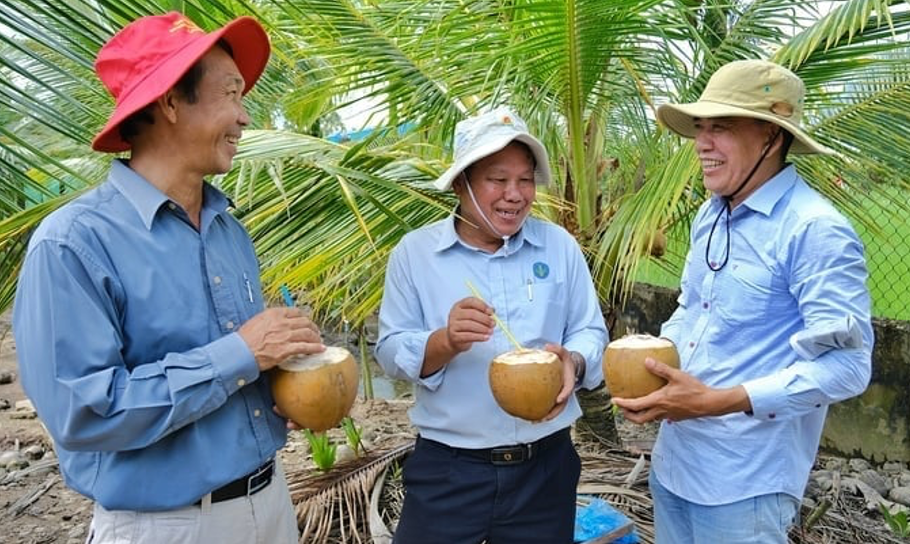Once overlooked in national agricultural strategies, coconuts,particularly fresh coconuts, have emerged as one of Vietnam’s top fruit export products, following only durian and dragon fruit in export value.
According to the Department of Crop Production and Plant Protection, fresh coconut exports reached USD 390 million in 2024, accounting for 31% of total coconut export turnover. Significantly, both the United States and China—the world’s two largest markets—have officially opened their doors to fresh Vietnamese coconuts, creating enormous opportunities for growth.
This transformation is the result of coordinated efforts by multiple stakeholders. However, to sustain this momentum and compete with coconut powerhouses like Thailand, the Philippines, and Indonesia, Vietnam’s coconut sector must overcome several persistent bottlenecks.
Ms. Tran Le Hoa, Deputy Head of Social Sciences at the Vietnam Coconut Association, pointed out that one of the most significant barriers is the fragmented production structure. Coconuts are currently grown in 16 provinces and cities, but primarily through intercropping systems, making it difficult for businesses to source coconuts that are consistent in variety, size, and quality.
To address this, Hoa emphasized the urgent need to establish a legal framework for concentrated coconut farming, which would facilitate access to credit and integration into formal export supply chains.
 Vietnam’s coconut industry holds strong potential for growth.
Vietnam’s coconut industry holds strong potential for growth.A fundamental solution lies in the standardization of coconut varieties. Local authorities should collaborate with cooperatives and enterprises to identify and certify elite mother plants, and to guide breeding programs that ensure quality and regional suitability.
Additionally, developing standardized cultivation and fertilizer management practices is crucial, especially for fresh coconuts where water quality is a key determinant of export value. Unsustainable intensive farming practices must be curbed to preserve coconut quality and ensure long-term viability.
Building regional branding is another indispensable strategy. Each coconut variety should have a clear identity linked to geographical indications, including origin information, certified ownership, and planting area codes. Promotional activities—such as participation in international trade fairs, digital marketing on e-commerce platforms, and partnerships with major importers—should be more systematic and large-scale.
At a strategic level, incorporating coconut into Vietnam’s national action program for major industrial crops is critical. This inclusion would help unify regional planning and provide a foundation for government ministries to prioritize investment in infrastructure, logistics, processing, and agricultural technology.
With the right policy support and strategic interventions, Vietnam’s coconut industry holds significant potential to become a billion-dollar export sector, contributing both to rural economic development and the global positioning of Vietnamese agricultural products.